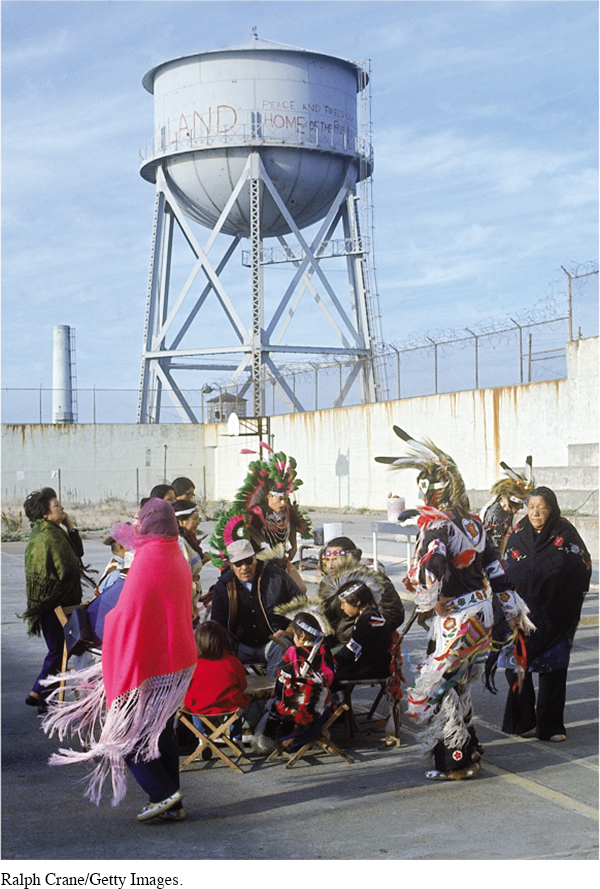The American Promise: Printed Page 817
The American Promise, Value Edition: Printed Page 740
The American Promise: A Concise History: Printed Page 845
Native American Protest
The cry “red power” reflected the influence of black radicalism on young Native Americans, whose activism took on fresh militancy and goals in the 1960s. The termination and relocation programs of the 1950s, contrary to their intent, stirred a sense of Indian identity across tribal lines and a determination to preserve traditional culture. Native Americans demonstrated and occupied land and public buildings, claiming rights to natural resources and territory they had owned collectively before European settlement.
In 1969, Native American militants captured world attention when several dozen seized Alcatraz Island, an abandoned federal prison in San Francisco Bay, claiming their right of “first discovery” of this land. For nineteen months, they used the occupation to publicize injustices against Indians, promote pan-

In Minneapolis in 1968, two Chippewa Indians, Dennis Banks and George Mitchell, founded the American Indian Movement (AIM) to attack problems in cities, where about 300,000 Indians lived. AIM sought to protect Indians from police harassment, secure antipoverty funds, and establish “survival schools” to teach Indian history and values. The movement’s appeal quickly spread and filled many Indians with a new sense of purpose. Lakota activist and author Mary Crow Dog wrote that AIM’s visit to her South Dakota reservation “loosened a sort of earthquake inside me.” AIM leaders helped organize the “Trail of Broken Treaties” caravan to the nation’s capital in 1972, when activists occupied the Bureau of Indian Affairs to express their outrage at the bureau’s policies and interference in Indians’ lives. In 1973, a much longer siege occurred on the Lakota Sioux reservation in South Dakota. Conflicts there between AIM militants and older tribal leaders led AIM to take over for seventy-
The American Promise: Printed Page 817
The American Promise, Value Edition: Printed Page 740
The American Promise: A Concise History: Printed Page 845
Page 818Although these dramatic occupations failed to achieve their specific goals, Indians won the end of relocation and termination policies, greater tribal sovereignty and control over community services, protection of Indian religious practices, and a measure of respect and pride. A number of laws and court decisions restored rights to ancestral lands and compensated tribes for land seized in violation of treaties.